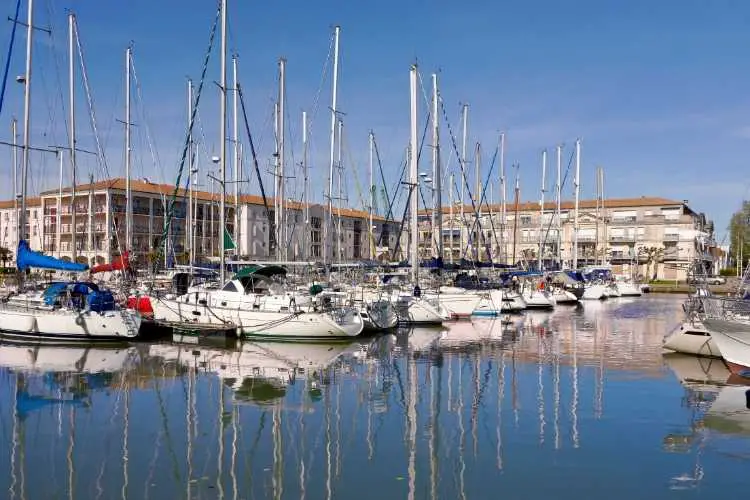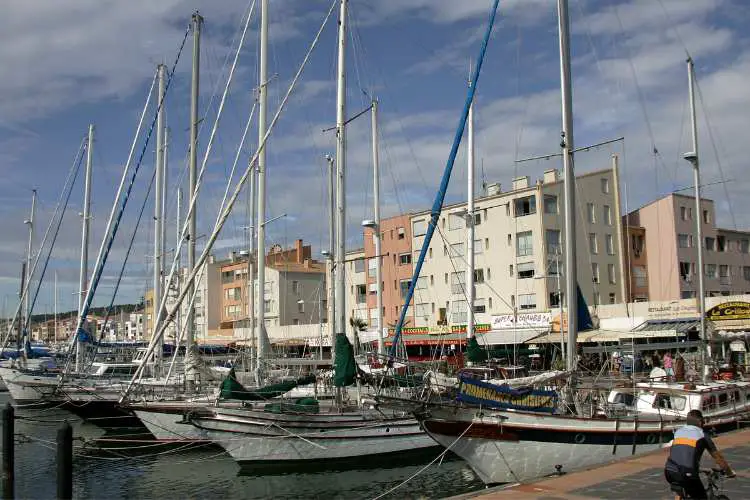Rochefort, somewhat overshadowed by seaside neighbours La Rochelle to the north and Royan to the south, is often neglected by visitors to the Atlantic coastline of Poitou-Charentes. This is a pity because this historic naval stronghold on the River Charente has plenty to offer.
Where is Rochefort in France?
Rochefort, the so-called Versailles of the Sea, is in Nouvelle-Aquitaine and lies on the border of the Aunis and Saintonge regions. It sits on the river Charente which flows through the town on its way to the Atlantic. It is only 18 miles from La Rochelle and you can easily reach Rochefort by train from Nantes, Bordeaux, and of course La Rochelle. You should note that the town is sometimes referred to as Rochefort-sur-Mer.
What is Rochefort famous for?
The town dates from the era of the great sea explorers, a time commemorated in the Jardin des Retours beside the Charente river, where world-travelling botanists would store the plants they had collected on their voyages.
Immediately adjacent is the Corderie Royale, the royal rope works built in 1666 by Colbert on the orders of Louis XIV to manufacture all the rigging for the great warships until the time of the Revolution.
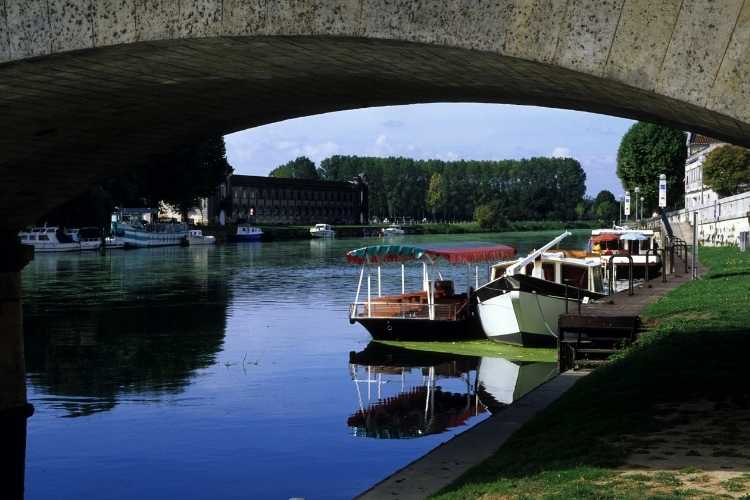
Having admired the English navy, and deciding he needed something similar, Louis XIV said to Colbert: ‘Faites grand, faites beau, faites vite’. Colbert obeyed.
The remarkable building he constructed just to make the ropes is some 374m (1,227ft) long, was damaged during World War II, but part of it has been restored using the original stonework to serve as a living museum to rope making. (Open: all year. www.corderie-royale.com).
Shipbuilding in Rochefort
During the 17th century, as thousands of workmen arrived at the new shipbuilding works, a shanty town sprang up. This was the embryonic Rochefort.
Michel Bégon, Colbert’s cousin, was appointed to sort the city out, and he was determined to make it hygienic and efficient. He proudly boasted later: ‘I found the town in wood. I left it in stone.’
Rochefort was rebuilt in units seven metres wide, wherein all the boulevards were the same width, sufficient to take carriages parked either side and still allow two central moving lanes, a happy foresight that makes Rochefort perfect for 21st-century traffic needs.
No boulevard or street was permitted to be closed at the end, an ingenious idea that allowed sea breezes to sweep away any fever or malaria. The houses all had a central door flanked by two windows, with three windows in the upper storey.
And this layout is still evident today, though 19th-century ‘amalgamations’ to accommodate the more grandiose façades of private hotels have tampered with the evidence a little.
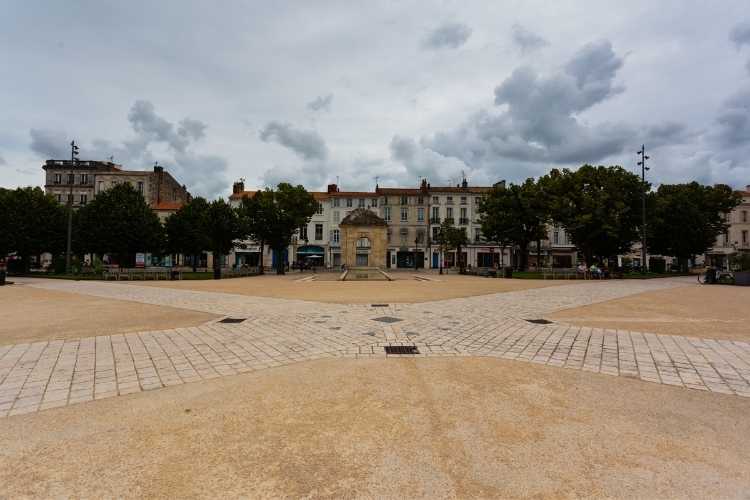
Bégon was not only an administrator and town planner but something of an amateur botanist. The begonia, first brought back from the Caribbean by the botanist priest Charles Plumier (translated as Charles Pencil Box on some websites!) in the 17th century, was named after Bégon.
The Conservatoire du Bégonia (1 Rue Charles Plumier 17300 Rochefort. Tel: 05 46 82 40 30; www.begonia.rochefort.fr), contains over 1,300 species, the largest collection in France.
Rochefort’s Hermione Project
Not far from the Corderie Royale, is the biggest fax you’re ever likely to see, a facsimile of the Hermione, the ship in which General La Fayette sailed to America to reinforce the insurgent troops.
This painstaking and prolonged project, began in 1997 using traditional tools and techniques, and was finally completed in 2015, then the ship repeated that voyage, finally returning to Rochefort in August 2015.
It is fascinating to see how ingeniously frigates like the Hermione were constructed; it’s like a huge three-dimensional jigsaw puzzle. (Arsenal maritime, Place Amiral Dupont, 17308 Rochefort. Tel: 05 46 82 07 07; www.hermione.com).
Rochefort markets
Rochefort street market cocks a snook at EU agricultural regulations by insisting on marketing local produce grown by independent smallholders.
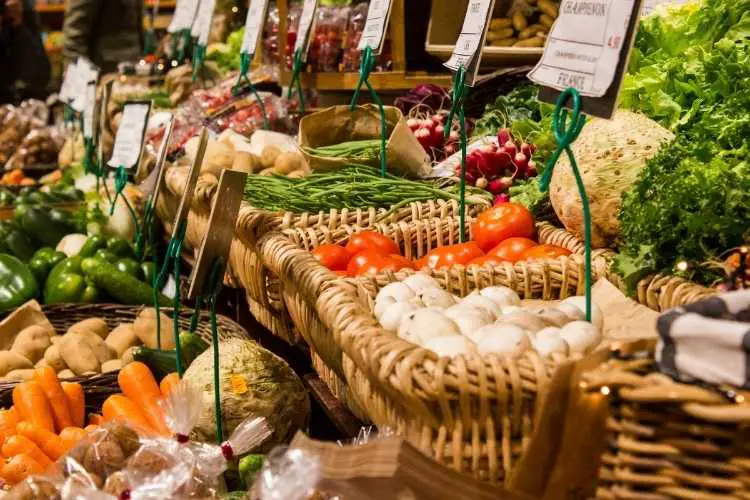
Fruit, vegetables and cheeses of all manner of weird shapes and sizes are abundant here, and not one measuring up to EU specifications – but they taste superb.
You must try la Jonchée, a unique cows’ cheese wrapped in reeds, soft and moist and white, and needing consumption within the day. Or the mohjettes, the white haricot beans grown at Pont l’Abbé that find their way into countless regional dishes.
Although you may not want to be up at 6am when on holiday, markets are best visited earlier rather than later, before 10am at the latest. For food bargains, close to midday is when vendors sell off stuff cheaply.
Brouage village
Little egrets, spoonbills, herons, swans and geese gathered on the marais that comprises the Réserve Naturelle de Moëze which is a wonderful place for birdwatching.
It’s quite a circuitous route to find Moëze, but well worth the effort as it forces you, if you’re continuing south, to pass through the delightful village of Brouage, a place completely encircled by the marshes.
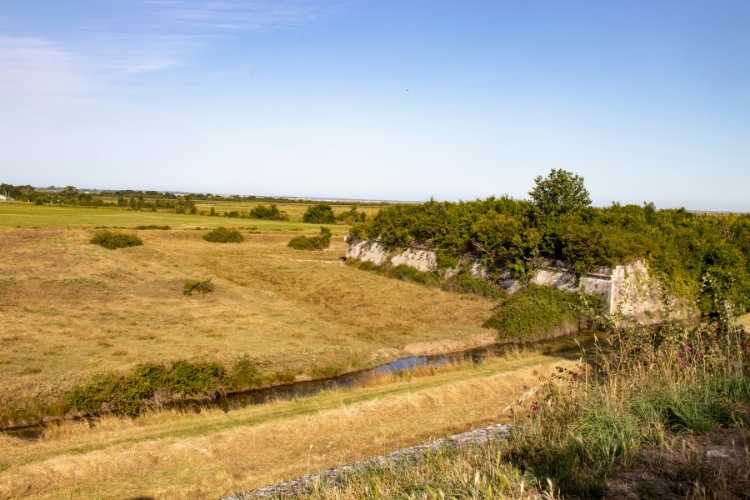
Not so long ago, Brouage was a lively port trading in salt, the ‘white gold’. It was founded in 1555 by Jacques de Pons, and rapidly became one of the most important trading ports on the Atlantic coast.
In 1567, Brouage, or Jacopolis-sur-Brouage as it was then known, was the birthplace of Samuel Champlain, explorer and acknowledged founder of the city of Quebec (1608), and consolidator of the French colonies in the New World.
He discovered the lake that bears his name (1609) and made other explorations of what are now northern New York, the Ottawa River, and the eastern Great Lakes.
In the 16th century, Brouage was sheltered by massive fortifications, which were also used as prisons for aristocrats and non-Juring priests during the Revolution.
Today, Brouage is enjoying something of a revival: shops have opened in renovated stables and the main building (La Halle aux Vivres), the Porte Royale and La Poudrière are all open to visitors.
It’s a quiet place, still something of a backwater without the water, but it has an ethereal quality, a homeliness and benign sense of well-being.
Other places to visit near Rochefort
Other places to visit include the Musée de la Marine, the old naval medical school the l’Ecole de Médecine Navale, the Ferme Aquacole, a sea farm on nearby Île Madame.
Rochefort’s ‘beach resort’ can be found on the peninsula of Fouras. There are plenty of things to see and do on Fouras, so it’s well worth a visit in its own right.
Nature lovers will also enjoy the natural reserve on the marshes or marais at Yves, as well as that at Moeze, and also the nature area at Breuil Magné known as La Cabane de Moins.
In recent years Rochefort has also become a tourist attraction, too, as a spa town; if you’re into that sort of thing Eurothermes is well worth a visit.

